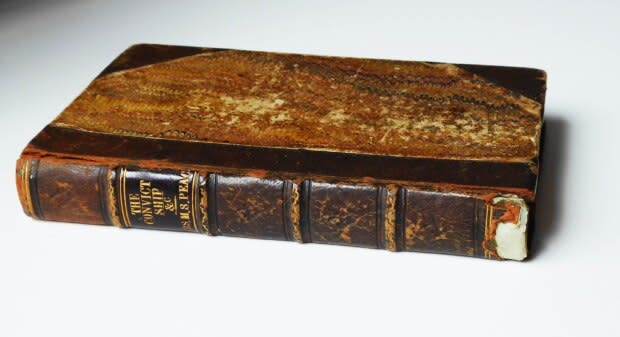How a 19th-century St. John's poem-turned-folk song brought together relatives in New Zealand

Folk musician Keith Murphy wrote a tune that travels both through time and space — from St. John's to New Zealand, and from the 19th century to modern day.
The Land of Fish and Seals is inspired by a Margaret Peace work of poetry under the same name, originally written in St. John's in March 1849.
Murphy told CBC Radio's Weekend AM he stumbled upon the lines in Haulin' Rope and Gaff, a book of poetry compiled by Shannon Ryan and Larry Short, that had been sitting on his shelf for years. Originally from St. John's, and now residing in Vermont, Murphy said he was struck and inspired by Peace's words.
"I started to think about it as a possible song. So I started to work on a melody, and developed a part and started signing it," said Murphy.
"It became a really important song for me, and later became the title track of my most recent solo CD."
But Murphy didn't know much about Peace, he said, only that she had immigrated from Scotland, which she described in her poem as a home not for the faint of heart, with angry seas and harsh winters. She also expressed admiration for the land and of the people of Newfoundland and Labrador.
He would later find out a little more after a gig in St. John's, when a concertgoer approached him afterwards with a short history lesson.

"She was kind of an early feminist-type figure, a very, very strong political figure, socially anyway," he said.
"That was the first time I had met anybody, or had spoken to anybody, who really knew anything of Margaret Peace, until this past spring."
Family ties
Diane Morcan owns a diary written by Peace — her great-great-grandmother — which inspired her to begin researching Peace's life from her home in Tauranga, New Zealand. That's when she found Murphy's rendition of her ancestor's poem.
"I was quite intrigued by this and I thought, 'Oh this is interesting.' After I listened I was really delighted that he had chosen this poem and created such a wonderful song and melody," Morcan said.
"She was great with poetry. She had written so, so much."
But Morcan wasn't alone.
Another woman in New Zealand, this time in Wellington, had been researching Peace for about two decades.
Jenny Dickson is Peace's great-granddaughter. Dickson's grandmother is Peace's youngest child, born in St. John's before the family resettled in New Zealand.
Dickson also owns writings from Peace, a diary of her journey from St. John's to Auckland, filled with poems and personal thoughts as she left Newfoundland and Labrador behind after seven years and the three children who died and were buried there.
Neither Dickson nor Morcan knew each other ahead of finding Murphy's song, and through the folk singer they connected with each other.
"I was astounded to find out that, in fact, they hadn't known each other," said Murphy. "At that point I put them in touch with each other."
The wharves and stores that have given labour to so many seem idle and deserted for the fisheries have failed for three successive years and the poor of the land are crying for bread. The rich are either withdrawing or losing and those of moderate means are seeking another land where they may get along without the continued harassing fear of failing fisheries and bad debts and also where the climate will not be so severe. So we, along with many others are about to leave the now quiet city and seek our fortunes on the distant shores of New Zealand. - Margaret Peace, Dec. 24, 1864.
To St. John's
Dickson's intrigue with her family's storyline brought her to St. John's in 2000. She sought out more information on her great-grandmother and walked the same roads as Peace did nearly 150 years earlier.
Dickson located the gravesites of Peace's three boys, who are buried in the General Protestant Cemetery.
Through walking around the grounds of the cemetery Dickson noticed another family connection.
"We found about 20 metres away the grave of Capt. Roper, who was the skipper of the Clara when they came to New Zealand."
There were 37 passengers aboard the Clara, a small brigantine captained by Roper. Fifteen of those on board were children — seven were Peace's. The trip was nearly 16,000 kilometres.
Listen to the full interview:
Read more from CBC Newfoundland and Labrador


